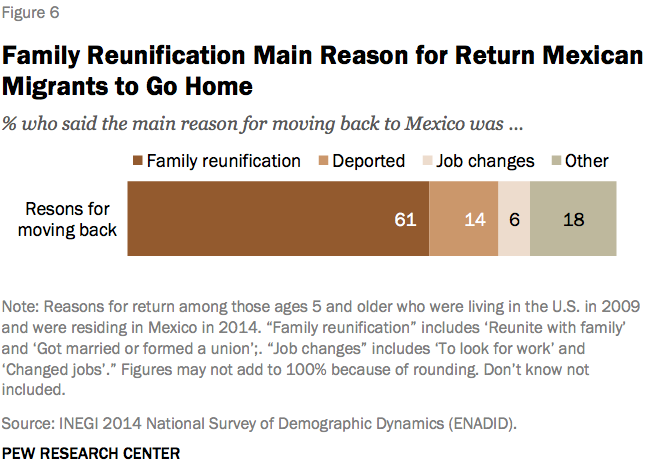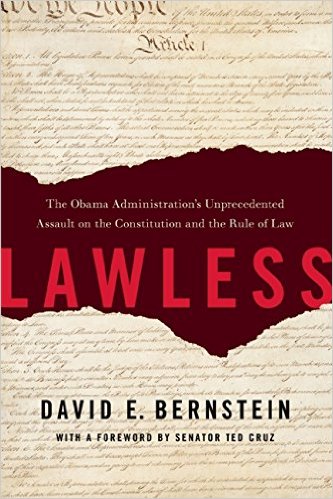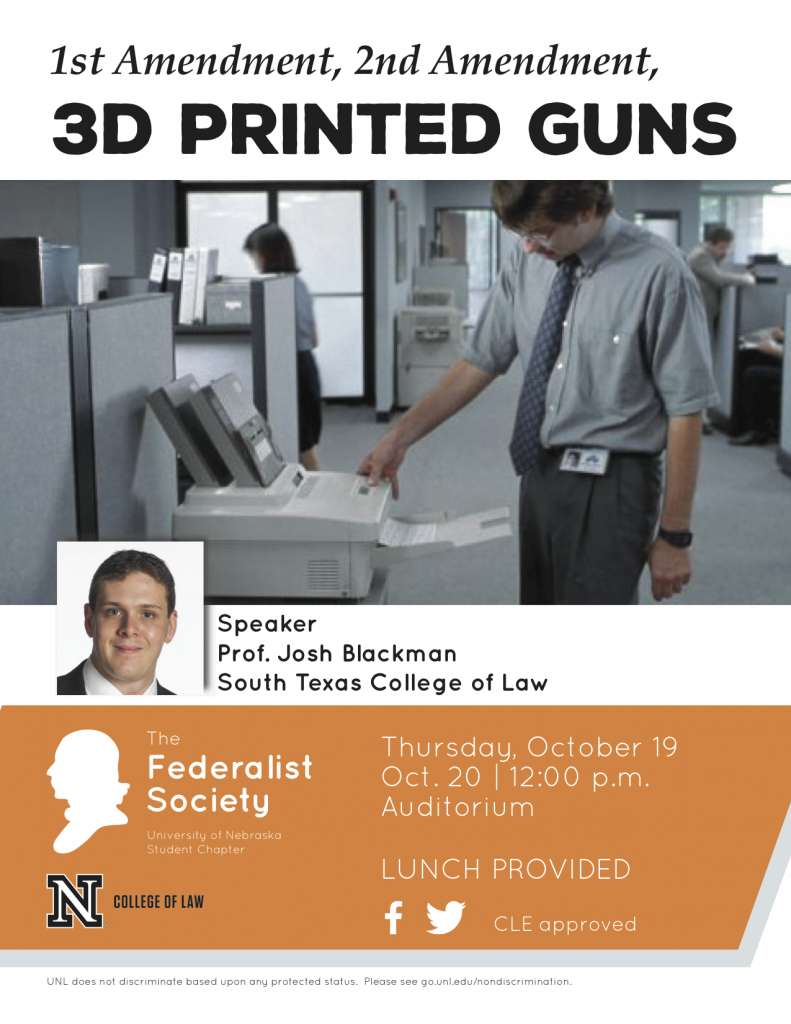A new analysis from the Pew Foundation concludes that more Mexicans are leaving the United States than entering the United States. Specifically, from 2009 to 2014, 870,000 Mexicans entered the United States, but a million Mexicans left.
From 2009 to 2014, 1 million Mexicans and their families (including U.S.-born children) left the U.S. for Mexico,according to data from the 2014 Mexican National Survey of Demographic Dynamics (ENADID). U.S. census data for the same period show an estimated 870,000 Mexican nationals left Mexico to come to the U.S., a smaller number than the flow of families from the U.S. to Mexico.
Why have the number returning to Mexico increased? The primary reason is family reunification, although lack of work opportunities was also a factor:
Fully six-in-ten (61%) of those Mexicans who reported that in 2009 they were living in the U.S. and by 2014 were back in Mexico said they had moved back either to reunite with family or to start a family. In comparison, 14% said they had been deported from the U.S., and only a small share (6%) gave employment reasons (either to look for a job or because they got a job in Mexico).
Roughly 45,000 Mexicans who arrived in 2009, and returned before 2014, did so because they were unable to find employment here.
Lack of work in the U.S. was a more important reason for the 180,000 return migrants who lived in Mexico in 2009, left for the U.S. after that, and came back to Mexico between 2009 and 2014. One-quarter (25%) of more recent returnees said the main reason they came back was they had not been able to find a job, while 40% said the main reason was to reunite with family.
The inability to find jobs was due, in part, to the weakened U.S. economy:
The decline in the flow of Mexican immigrants to the U.S. is due to several reasons (Passel et al, 2012). The slow recovery of the U.S. economy after the Great Recession may have made the U.S. less attractive to potential Mexican migrants and may have pushed out some Mexican immigrants as the U.S. job market deteriorated.
These findings bolster one of the arguments that I and others have made concerning the lawfulness of DAPA. It is beyond dispute that Congress has only appropriated enough funds for the President to deport roughly 400,000 aliens per year. However, this was not the only means designed to control the population of aliens in the United States unlawfully. Rather, Congress created a series of complex interlocking mechanisms that may pressure aliens to self-deport. Self-deportation may be due to a desire to return to see family or an inability to gain employment in the United States. In this sense, the threat of formal removal–however unlikely–is not the only impetus for self-deportation. DAPA weakens these pressures in two important respects.
First, by granting deferred action to parents of citizens, DAPA directly thwarts Congress’s goal of making it harder to keep families together where the child is a citizen, but the parent is not. Citizen children must wait up to 21-years before they can petition for a green card for their parents, and then the parent must leave the country, and seek consular processing abroad. During the two-decade-interregnum, the parent would be unable to obtain lawful employment, and could be subject to removal. The INA specifically countenances breaking apart families for considerable periods of time. DAPA disregards that. While this may seem a callous decision, it is reflected in both the text and history of the Immigration and Nationality Act. (This is true even though Congress has recognized in that deferred action may be granted–the specific goal trumps the general provision). As the Pew analysis concludes, hundreds of thousands of aliens self-deported in order to be closer with their families. DAPA subverts that incentive to self-deport, and instead works to keep families together. This is an admirable policy goal, but inconsistent with the tenor of the immigration laws.
Second, and perhaps more importantly, DAPA directly thwarts Congress’s goal of making it harder for aliens who are here illegally to find employment, and thus support themselves. Virtually all recipients of DAPA will receive work authorization, and be able to seek legal employment. It is safe to assume that many of the ~60,000 Mexicans who self-deported because they could not find suitable employment would be able to obtain lawful employment because of DAPA. The impetus for their decision to leave the country–inability to find work–very well may disappear as a direct consequence of DAPA. Gaining the ability to work legally, at or above the minimum wage, could cause aliens to think twice about leaving the country to gain work back home. Here too, DAPA is not consonant with congressional policy.
This study highlights how DAPA is manifestly contrary to the congressional scheme Congress designed. Formal removal is not the only avenue that Congress designed. Pressures that compel self-deportation are also at play. DAPA disregards those pressures.


